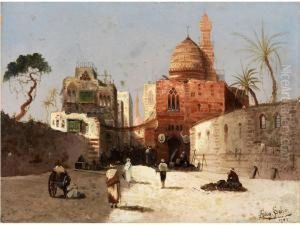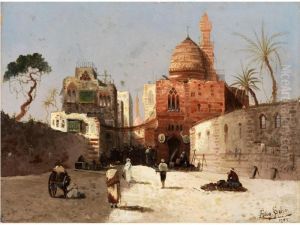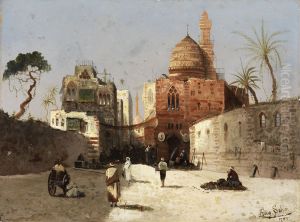Wilhelm Sohn Paintings
Wilhelm Sohn was a German painter, born on January 4, 1830, in Berlin. He was known for his genre scenes, portraits, and historical paintings. Sohn received his artistic education at the Prussian Academy of Arts in Berlin and was influenced by the German Romantic movement, as well as the Düsseldorf school of painting, which emphasized detail and the effects of color.
He furthered his studies in Düsseldorf under the guidance of renowned painters such as Carl Sohn, his father, and Friedrich Wilhelm von Schadow, who was a key figure in the Düsseldorf school. This provided him with a strong foundation in the technical aspects of painting and an exposure to the academic style that dominated German art at the time.
Sohn's works were characterized by their fine detail, vibrant color palette, and the clarity of form. He often depicted scenes of daily life, historical events, and classical themes with a focus on narrative and the human figure. His portraits were particularly appreciated for their elegance and the psychological depth he brought to his depictions of his subjects.
Throughout his career, Wilhelm Sohn exhibited his work widely and received significant acclaim. He became a member of the Berlin Academy and was awarded various honors for his contributions to German art. Sohn’s paintings can be found in numerous collections and have been exhibited in prestigious institutions, reflecting his status as a well-respected artist of his time.
Wilhelm Sohn died on November 29, 1899, in Düsseldorf. His legacy is preserved in the works he left behind, which continue to be studied and appreciated for their contribution to 19th-century German art. Sohn remains a notable figure in the history of the Düsseldorf school and is recognized for his skill in capturing the essence of his subjects with both realism and sensitivity.


